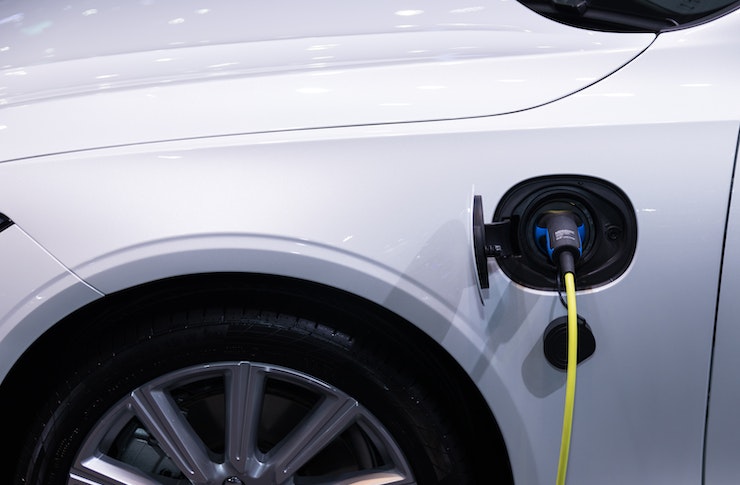Rent to Own Cars for KIA: What You Need to Know
Exploring flexible vehicle ownership options can feel overwhelming, especially when traditional financing seems out of reach. For those interested in KIA vehicles, rent-to-own programs may offer an alternative path to getting behind the wheel without the typical credit checks or upfront deposits. Understanding how these arrangements work, what to expect, and the real costs involved can help you make an informed decision about whether this option aligns with your transportation needs and financial situation.

Rent-to-own car programs have emerged as an alternative financing solution for individuals who face challenges with traditional auto loans. These arrangements allow drivers to make regular payments toward eventual ownership of a vehicle, often without the stringent credit requirements or large down payments that conventional dealerships demand. For those specifically interested in KIA models, understanding the landscape of rent-to-own options across the United States can provide valuable insight into this growing market.
How Do Rent-to-Own Car Programs Work?
Rent-to-own car arrangements typically function as a hybrid between leasing and purchasing. Participants make weekly or monthly payments over a predetermined period, with a portion of each payment contributing toward the eventual purchase price of the vehicle. Unlike traditional leasing, these programs are designed to result in ownership once all payment obligations are fulfilled. The structure varies by provider, but most programs require proof of income, valid identification, and sometimes a minimal initial payment, though this is significantly lower than traditional down payments. These programs often cater to individuals with poor credit, no credit history, or those who have experienced bankruptcy, making vehicle ownership accessible to a broader population.
What Makes KIA Vehicles Popular for Rent-to-Own Programs?
KIA has established itself as a manufacturer offering reliable, affordable vehicles with strong warranty coverage. Models like the KIA Forte, Soul, Optima, and Sportage are frequently featured in rent-to-own inventories due to their balance of affordability, fuel efficiency, and dependable performance. The brand’s 10-year/100,000-mile powertrain warranty provides additional peace of mind for those entering rent-to-own agreements, as it helps protect against major mechanical issues during the payment period. KIA vehicles also tend to have lower maintenance costs compared to luxury brands, making them practical choices for budget-conscious drivers. The variety of body styles, from compact sedans to crossover SUVs, ensures that different family sizes and lifestyle needs can be accommodated within rent-to-own programs.
Are Credit Checks and Deposits Really Not Required?
Many rent-to-own car providers advertise programs without traditional credit checks or substantial deposits, but the specifics vary considerably. Some companies perform alternative credit assessments that focus on income verification and payment history for utilities or rent rather than FICO scores. Others may require a small initial payment, sometimes called a processing fee or first week’s payment, which is considerably less than the typical down payment of 10-20 percent required by conventional dealerships. It is important to carefully review the terms of any agreement, as some providers may have different requirements based on the vehicle’s value or the applicant’s specific circumstances. While the barrier to entry is generally lower than traditional financing, completely eliminating all upfront costs and verification processes is rare in practice.
What Are the Real Costs of Rent-to-Own Programs?
Understanding the financial implications of rent-to-own arrangements is essential before committing to any agreement. While these programs offer accessibility, they typically come with higher overall costs compared to traditional auto loans. Interest rates, often embedded in the payment structure rather than explicitly stated, can be significantly higher. The total amount paid over the contract period may exceed the vehicle’s market value by 20 to 50 percent or more.
| Provider Type | Weekly Payment Range | Contract Duration | Total Cost Estimation |
|---|---|---|---|
| Local Rent-to-Own Dealerships | $75 - $150 | 2-4 years | $7,800 - $31,200 |
| National Franchise Programs | $100 - $200 | 2-3 years | $10,400 - $31,200 |
| Independent Buy Here Pay Here Lots | $80 - $175 | 2-4 years | $8,320 - $36,400 |
| Specialized No Credit Programs | $90 - $180 | 2-3 years | $9,360 - $28,080 |
Prices, rates, or cost estimates mentioned in this article are based on the latest available information but may change over time. Independent research is advised before making financial decisions.
These figures represent general estimates for used KIA vehicles in average condition. Actual costs depend on the specific model, year, mileage, provider policies, and local market conditions. Additionally, participants should budget for insurance, registration, maintenance, and potential late payment fees, which can add substantial expense to the overall arrangement.
What Should You Watch Out For in Rent-to-Own Agreements?
While rent-to-own programs provide access to transportation, they come with potential pitfalls that require careful consideration. Contracts may include clauses that allow the provider to repossess the vehicle after a single missed payment, leaving the participant without transportation and forfeiting all previous payments. Some agreements classify the arrangement as a rental rather than a purchase contract, meaning participants may not build equity until the final payment is made. Hidden fees for maintenance, insurance requirements, or early termination can significantly increase costs. It is crucial to read all contract terms thoroughly, understand the total cost of ownership, and ensure that the payment schedule fits within your budget with room for unexpected expenses. Consulting with a financial advisor or legal professional before signing can help identify unfavorable terms.
Where Can You Find Rent-to-Own KIA Programs in the United States?
Rent-to-own car programs are available throughout the United States, with availability varying by region. Major metropolitan areas typically have more providers, including both independent dealerships and national franchises specializing in alternative financing. Searching for local services in your area that offer flexible vehicle ownership options can yield multiple choices. Online platforms have also emerged that connect potential buyers with rent-to-own providers, allowing for comparison shopping. When evaluating providers, consider their reputation, customer reviews, contract transparency, and the condition of their vehicle inventory. Visiting multiple locations and comparing terms can help identify the most favorable arrangement for your specific situation.
Conclusion
Rent-to-own car programs offer an accessible path to vehicle ownership for individuals who face barriers with traditional financing, and KIA vehicles represent a practical choice within this market due to their reliability and affordability. However, these arrangements come with higher overall costs and contractual complexities that require careful evaluation. By understanding how these programs work, recognizing the true financial commitment, and thoroughly reviewing contract terms, potential participants can make informed decisions about whether rent-to-own represents the right solution for their transportation needs. Taking time to research providers, compare options, and assess your long-term financial capacity will help ensure that the path to vehicle ownership aligns with your goals and budget.




